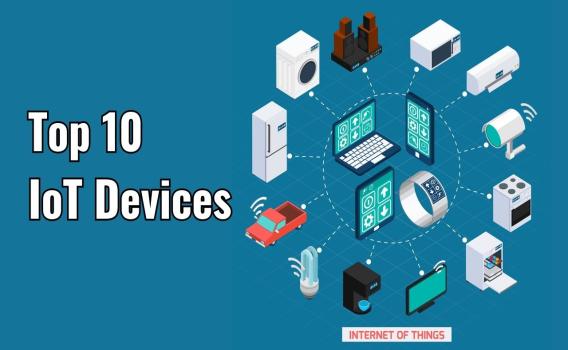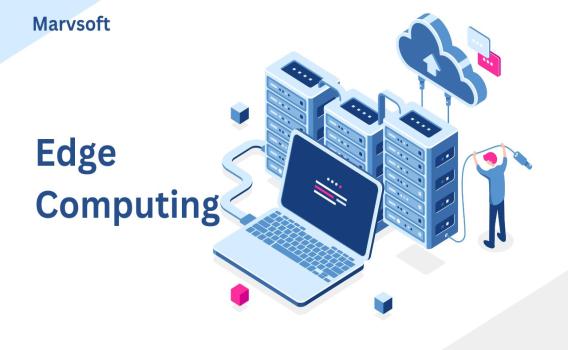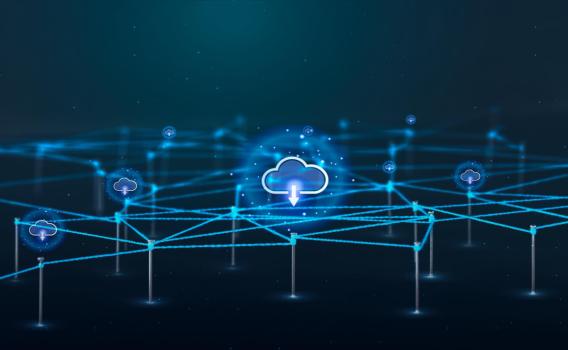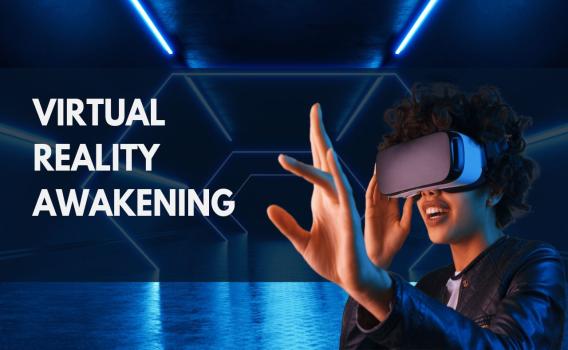


30-01-2024
In an era where connectivity is king, the Internet of Things (IoT) has emerged as a transformative force. This blog invites you to delve into the world of IoT devices, unveiling the top 10 innovations that are reshaping the fabric of our daily lives. From enhancing convenience to revolutionizing industries, these devices showcase the boundless possibilities of a connected future.
At the forefront of IoT innovation are smart home assistants like Amazon Echo and Google Home. These voice-activated devices not only answer questions and play music but also control smart home devices, turning our homes into intelligent, responsive environments.
In the realm of health and wellness, wearable devices like Fitbit and Apple Watch are leading the charge. These gadgets monitor our fitness levels, track sleep patterns, and provide valuable insights into our overall well-being, empowering us to take charge of our health.
The automotive industry is undergoing a revolution with IoT-enabled connected cars. From real-time navigation and entertainment to predictive maintenance, these vehicles are not just modes of transportation but integrated smart ecosystems on wheels.
Say goodbye to manual temperature adjustments with smart thermostats like Nest. These devices learn your preferences, optimize energy usage, and create a comfortable living environment. Embrace efficiency and sustainability with these IoT-powered climate control solutions.
In the industrial landscape, IoT sensors play a crucial role in optimizing operations. From monitoring equipment health to tracking inventory, IIoT sensors enhance efficiency, reduce downtime, and pave the way for predictive maintenance strategies.
Securing our homes and businesses has never been smarter. IoT-powered security systems, such as Ring Doorbell and Arlo cameras, provide real-time monitoring, alerts, and remote access, giving us peace of mind and control over our spaces.
In agriculture, IoT devices are transforming traditional farming practices. Smart sensors monitor soil conditions, weather patterns, and crop health, empowering farmers to make data-driven decisions for improved yields and sustainable practices.
The concept of smart cities is becoming a reality with IoT integration. From intelligent traffic management to waste disposal, IoT devices are enhancing urban living by optimizing resources, reducing congestion, and improving overall quality of life.
IoT devices are revolutionizing healthcare with innovations like remote patient monitoring and smart medical devices. From pacemakers to insulin pumps, these devices enhance patient care, provide real-time data to healthcare professionals, and improve treatment outcomes.
The retail landscape is evolving with IoT-powered solutions. Smart shelves, inventory trackers, and personalized shopping experiences are enhancing the customer journey and streamlining operations for retailers, ushering in a new era of connected commerce.
As we navigate the interconnected landscape of IoT, these top 10 devices stand as beacons of innovation, showcasing the profound impact of connected technologies on our daily lives. From the convenience of smart homes to the precision of healthcare monitoring, each device represents a piece of the larger puzzle that is shaping the future of IoT. Embrace the possibilities, stay connected, and witness the transformative power of these must-know IoT devices.


30-01-2024
Introduction: In the vast realm of computing, Quantum Computing stands as a celestial force, reshaping the cosmos of information processing. But before we plunge into the quantum frontier, let's first explore the foundational technology that supports this quantum leap—Cloud Computing.
Cloud Computing serves as the backbone of modern computing, revolutionizing how we store, access, and process data. In essence, it involves the delivery of computing services—such as storage, processing power, and applications—over the Internet. Users tap into a network of remote servers hosted on the "cloud" instead of relying on local servers or devices to meet their computing needs.
Now, let's journey beyond the clouds and explore Quantum Computing. At its core, Quantum Computing leverages the principles of quantum mechanics to process information in ways that surpass the capabilities of traditional computers. This blog invites you to unravel the mysteries and possibilities of Quantum Computing, from its foundational principles to real-world applications and the profound transformations it promises in the realm of information processing.
Quantum Computing brings the promise of exponential speedup in solving complex problems. From cryptography and optimization to drug discovery and artificial intelligence, the potential applications are vast. Quantum computers possess the ability to tackle problems that were once deemed computationally infeasible for classical machines.
To comprehend Quantum Computing, we must delve into the foundational principles of quantum mechanics. Superposition, entanglement, and quantum interference are at the heart of the quantum world, where particles can exist in multiple states simultaneously, and the state of one particle is intrinsically linked to another, regardless of distance.
The impact of Quantum Computing extends across various domains. In cryptography, quantum-resistant algorithms are being explored to secure communication in the face of quantum threats. Quantum machine learning holds promise for optimizing complex systems, and quantum simulations aim to revolutionize fields like chemistry and material science.
As we step into the quantum frontier, challenges emerge. Quantum decoherence, error correction, and scalability are hurdles that scientists and researchers are actively addressing. Navigating these challenges is crucial to unlocking the full potential of quantum computers and making them practical for widespread use.
Recent breakthroughs in achieving quantum supremacy, where a quantum computer outperforms the most advanced classical computers on specific tasks, mark significant milestones in the field. This achievement opens the door to new possibilities and fuels optimism about the transformative power of quantum computing.
As with any technological leap, ethical considerations come into play. Quantum computing's potential to break current encryption standards raises questions about data security and privacy. It becomes imperative to establish ethical frameworks that guide the responsible development and deployment of quantum technologies.
Nations and corporations are actively investing in the quantum race, recognizing the strategic importance of quantum technologies. Collaborative efforts, research initiatives, and the pursuit of quantum advantage are shaping the landscape of this fast-evolving field.
The synergy between Quantum Computing and Artificial Intelligence holds promise for accelerating machine learning algorithms and solving complex optimization problems. The combination of these two transformative technologies is poised to redefine the capabilities of intelligent systems.
As we gaze into the quantum future, the possibilities are both exhilarating and awe-inspiring. Quantum Computing is not merely an evolution; it is a paradigm shift in the way we process information. From scientific breakthroughs to solving challenges that transcend classical computation, the quantum frontier beckons us toward a future where the unimaginable becomes reality.
Conclusion
In conclusion, Quantum Computing stands as a beacon of technological advancement, offering a glimpse into a future where the computational limits of classical computers are transcended. As research and development propel us forward, the quantum realm holds the potential to reshape industries, solve complex problems, and unlock new dimensions of understanding in the ever-expanding universe of information processing. Join us on this quantum journey as we unravel the mysteries and explore the infinite possibilities that Quantum Computing presents to humanity.


29-01-2024
In the ever-accelerating digital landscape, the emergence of Edge Computing stands as a beacon of innovation, transforming the way we approach data processing and connectivity. This blog invites you to delve into the intricacies of Edge Computing, unraveling its evolution, applications, advantages, and the challenges it addresses in our data-driven world.
At its core, Edge Computing redefines the traditional paradigm of centralized data processing by bringing computational power closer to the data source. Unlike cloud computing, which relies on centralized servers, Edge Computing distributes computing resources to the "edge" of the network, allowing data to be processed locally.
The roots of Edge Computing can be traced back to the growing need for faster response times and reduced latency in the face of burgeoning data volumes. As the Internet of Things (IoT) gained prominence, the limitations of centralized cloud computing became evident, paving the way for the decentralized, distributed architecture of Edge Computing.
Edge Computing finds diverse applications across various industries, from healthcare and manufacturing to smart cities and autonomous vehicles. In healthcare, for instance, it enables real-time analysis of patient data, facilitating prompt decision-making. In manufacturing, Edge Computing enhances efficiency by enabling immediate processing of data from sensors on the factory floor.
The proximity of computational resources to the data source yields a plethora of benefits. Reduced latency, enhanced performance, bandwidth optimization, and improved security are among the advantages that make Edge Computing a compelling solution. These benefits are particularly critical in scenarios where real-time decision-making is paramount.
While Edge Computing offers substantial advantages, it comes with its own set of challenges. Managing distributed infrastructure, ensuring data security at the edge, and addressing interoperability issues require careful consideration. However, innovative solutions, including edge-native security protocols and improved management tools, are actively being developed to overcome these challenges.
Examining real-world use cases provides a tangible understanding of Edge Computing's impact. From smart grids optimizing energy distribution to augmented reality applications delivering seamless experiences, these examples showcase how Edge Computing is reshaping industries and enhancing user experiences.
The integration of Edge Computing with 5G networks is a game-changer. The high-speed, low-latency capabilities of 5G complement Edge Computing, unlocking new possibilities for applications such as augmented reality, autonomous vehicles, and the Internet of Things.
As the world grapples with the imperative of sustainability, Edge Computing emerges as a key player in minimizing environmental impact. By reducing the need for data to travel long distances, Edge Computing contributes to energy efficiency, a crucial consideration in the digital era.
The trajectory of Edge Computing points towards a future where decentralized processing becomes the norm. As technology continues to evolve, Edge Computing is anticipated to play a pivotal role in shaping the infrastructure of smart cities, enhancing the capabilities of IoT devices, and enabling a new era of connected and intelligent systems.
Conclusion
In conclusion, Edge Computing stands at the forefront of technological innovation, revolutionizing the way we process and utilize data. Its applications span across industries, offering unprecedented advantages in latency reduction, performance enhancement, and improved security. As we navigate the digital future, the marriage of Edge Computing and emerging technologies like 5G promises to unlock a new dimension of possibilities, ushering in an era where proximity to data is key to unlocking the full potential of our interconnected world.


28-01-2024
Introduction: The Engine Driving Technological Revolution
In the dynamic landscape of technology, one factor stands as the bedrock of innovation – computing power. From the early days of room-sized mainframes to the era of pocket-sized supercomputers, the journey of computing power has been nothing short of extraordinary. In this comprehensive exploration, we delve into the nuances of computing power, its evolution, and the seismic shifts it has triggered across various domains.
The journey begins with a glance at Moore's Law, the prophecy made by Gordon Moore in 1965 that the number of transistors on a microchip would double approximately every two years, leading to an exponential increase in computing power. For decades, this law held true, driving the miniaturization and enhancement of microprocessors. However, as we approach the physical limits of silicon-based transistors, the torch of progress is passing to new contenders.
Enter quantum computing, a paradigm shift that challenges the classical binary bit system. Quantum bits or qubits, existing in multiple states simultaneously, unlock the potential for parallel computation on an unprecedented scale. Quantum supremacy, the ability of quantum computers to outperform classical computers in specific tasks, is on the horizon, promising breakthroughs in cryptography, optimization problems, and scientific simulations.
Parallel processing, a concept often associated with supercomputers, has become a cornerstone in harnessing computing power. Instead of relying on a single processor, parallel computing divides tasks among multiple processors, exponentially speeding up computations. This approach is not limited to supercomputers; it has found its way into everyday devices, making multitasking and data processing more efficient.
Supercomputers, the titans of computing power, are not just tools for scientific simulations and weather forecasting; they are instrumental in unraveling complex problems in medicine, astrophysics, and materials science. We explore the architecture of these giants, their role in advancing research, and how they continue to push the boundaries of what's computationally possible.
In the era of cloud computing, access to immense computing power is no longer restricted to elite research institutions. Cloud service providers offer scalable resources on-demand, revolutionizing how businesses operate. We delve into the benefits, challenges, and the future trajectory of cloud computing, from infrastructure as a service (IaaS) to software as a service (SaaS).
As IoT devices proliferate, the demand for instantaneous processing power has given rise to edge computing. By processing data closer to the source, edge computing reduces latency and enhances real-time decision-making. We explore how this decentralized approach is shaping the future of computing power in the age of the Internet of Things.
What lies ahead for computing power is a tantalizing prospect. From advancements in neuromorphic computing mimicking the human brain to the integration of artificial intelligence and machine learning into everyday applications, the future promises a tapestry of possibilities. We examine how these emerging technologies will redefine the computing landscape and influence various industries.
As we navigate the complex and ever-expanding cosmos of computing power, one thing is clear – it's not just about faster processors or larger data centers. Computing power is the engine driving the innovation that shapes our world. From the quantum realms to the cloud and the edges of our networks, understanding the diverse facets of computing power is key to harnessing its potential for a future where possibilities are limitless.
In conclusion, join us on this expedition through the heart of computational prowess. Whether you're a tech enthusiast, a professional in the field, or someone simply curious about the forces shaping our digital future, this journey through the realms of computing power promises to be an enlightening and captivating experience.


28-01-2024
In the dynamic landscape of technology, Robotic Process Automation (RPA) stands out as a catalyst for revolutionary change. This blog aims to provide a thorough examination of RPA, shedding light on its applications, advantages, hurdles, and its profound influence across diverse industries.
At its essence, RPA leverages software robots or "bots" to automate rule-based tasks, replicating human interactions within digital systems. These bots are designed to optimize workflows, enhance accuracy, and significantly reduce the time required to execute repetitive tasks.
Benefits of RPA:
RPA's primary advantage lies in its capacity to elevate operational efficiency. By automating routine tasks, organizations can allocate human resources to more strategic and creative pursuits, fostering a culture of innovation. Additionally, RPA ensures consistency and accuracy in data processing, minimizing the risk of human error.
Real-World Applications:
The versatility of RPA extends across a myriad of industries, from finance and healthcare to manufacturing and customer service. In finance, RPA streamlines data entry, reconciliation, and compliance processes. In healthcare, it expedites claims processing and enhances the management of patient data.
Challenges in Implementation:
While the benefits of RPA are apparent, successful implementation requires overcoming specific challenges. Issues such as seamless integration with existing systems, employee resistance to change, and meticulous planning are critical considerations. Addressing these challenges is imperative to unlocking the full potential of RPA.
The Human Touch:
Contrary to misconceptions, RPA does not seek to replace human jobs; rather, it augments human capabilities. By handling routine and mundane tasks, RPA allows employees to redirect their focus towards tasks demanding creativity, critical thinking, and emotional intelligence. This collaborative synergy between humans and robots enriches the work environment.
Future Trends in RPA:
As technology evolves, so does RPA. Future trends include the integration of artificial intelligence (AI) and machine learning (ML), enabling bots to adapt and learn from experiences. This evolution is poised to enhance RPA's capabilities, solidifying its role as an indispensable tool for businesses.
Case Studies:
Real-world case studies spotlight successful RPA implementations across diverse industries. These examples underscore the positive impact on efficiency, cost savings, and overall business performance, providing valuable insights for organizations contemplating RPA adoption.
Q: Can RPA be integrated with existing systems?*
A: Yes, RPA is designed for seamless integration with existing systems, ensuring compatibility and efficiency.
Q: Does RPA replace human jobs?*
A: No, RPA is designed to complement human roles, freeing up time for more meaningful and strategic tasks.
Q: What industries benefit the most from RPA?*
A: RPA has demonstrated significant benefits in various industries, including finance, healthcare, manufacturing, and customer service.
Q: How can organizations overcome resistance to RPA implementation?*
A: Addressing resistance involves effective communication, thorough training, and involving employees in the transition process.
Q: What is the future of RPA?*
A: The future of RPA involves the integration of artificial intelligence and machine learning, propelling bots to adapt and learn from experiences, thereby enhancing their capabilities.
Conclusion:
In conclusion, Robotic Process Automation is not merely a technological advancement but a transformative force reshaping the business landscape. Embracing RPA empowers organizations to achieve operational excellence, drive innovation, and stay ahead in a competitive market. As we navigate the future, the collaboration between humans and robots through RPA is set to redefine the way we work, unlocking new dimensions of efficiency and productivity.


27-01-2024
Virtual reality (VR) is a revolutionary technology that has taken the world by storm, allowing individuals to immerse themselves in a virtual world and experience things beyond their wildest imagination. From gaming and entertainment to education and healthcare, VR has opened up a whole new dimension of possibilities.
1. Introduction to virtual reality (VR)
At its core, virtual reality refers to the use of computer technology to create a simulated environment that can be explored and interacted with by an individual. This simulated environment can be a realistic replication of the physical world or a completely fictional one. With the help of a VR headset or goggles, users can visually and audibly immerse themselves in this virtual realm, blurring the boundaries between reality and the digital world.
2. Historical background of virtual reality
The concept of virtual reality dates back to the early 1960s when the first interactive flight simulator was developed. However, it wasn't until the late 1980s and early 1990s that VR became more accessible and commercially available. Since then, advancements in technology have made VR more affordable and realistic, revolutionizing the way we experience digital content.
3. The impact of VR on various industries
One of the significant impacts of virtual reality has been in the entertainment and gaming industry. VR gaming provides a whole new level of immersion and realism, transporting players into the virtual world like never before. Additionally, VR has found applications in education and training, allowing students and professionals to learn through realistic simulations and virtual environments. In the healthcare industry, VR is being used for medical training, therapy, and even pain management.
4. How virtual reality works
Virtual reality relies on a combination of hardware components and software algorithms to create immersive experiences. A VR headset, such as the Oculus Rift or HTC Vive, is worn by the user and provides a display for the virtual world. Tracking sensors and motion controllers enable users to interact with objects and navigate within the virtual environment. These components work together to create a seamless and immersive experience for the user.
5. Expanding virtual reality beyond gaming
While virtual reality initially gained popularity in the gaming industry, its potential extends far beyond that. Virtual travel and exploration allow individuals to visit iconic landmarks and experience different cultures from the comfort of their own homes. Virtual social interactions enable people to connect with others from around the world, attending virtual conferences and events. Virtual reality is also a powerful tool for artists and designers to create immersive and interactive experiences that push the boundaries of traditional art forms.
6. The challenges and limitations of virtual reality
Despite its numerous benefits, virtual reality still faces several challenges and limitations. Health concerns, such as motion sickness and eye strain, can occur during prolonged use of VR headsets. Additionally, the cost of VR equipment can be a barrier for many individuals, limiting its accessibility. There are also challenges in creating inclusive experiences for users with disabilities and addressing concerns related to privacy and data security.
7. Virtual reality and the future
As technology continues to advance at a rapid pace, virtual reality holds immense potential for the future. Companies are continually developing more sophisticated VR headsets with improved visuals and reduced motion sickness. The applications of VR in fields like architecture, engineering, and space exploration are just beginning to be explored. With ongoing research and innovation, the virtual reality landscape is expected to expand even further, offering exciting and transformative experiences.
8. Conclusion
Virtual reality has emerged as a groundbreaking technology that allows individuals to transcend the physical boundaries of the real world and immerse themselves in virtual realms. The impact of VR reaches beyond gaming, with applications in education, healthcare, and various other industries. While challenges exist, the potential for virtual reality to reshape our lives and offer unparalleled experiences is undeniable.
FAQs
1. Can virtual reality be harmful to our health?
Virtual reality, like any technology, should be used in moderation to avoid potential health issues such as motion sickness and eye strain. Taking breaks and using VR in a well-lit environment can help minimize these effects.
2. Is virtual reality expensive?
The cost of virtual reality equipment can vary depending on the brand and specifications. However, with advancements in technology, VR headsets have become more affordable and accessible to a wider audience.
3. Are there any limitations to virtual reality?
Virtual reality still faces challenges in terms of inclusivity for users with disabilities, as well as concerns related to privacy and data security. Improvements in these areas are essential for a more widely adopted and inclusive VR experience.
4. How is virtual reality expanding beyond gaming?
Virtual reality is being used for virtual travel, social interaction, and creative expression. It allows individuals to experience and explore new environments, connect with others, and unleash their creative potential.

©2025 Marvsoft LLP | All Rights Reserved